May 21, 2020
There have been a lot of zoom meetings. We feel you. If you want to shake up the background in your next virtual meeting, why not add a little artistic flair to the mix with this selection of art and objects from the Glenbow collection.
Here are the instructions to set the images below as your background on Zoom and Microsoft Teams.
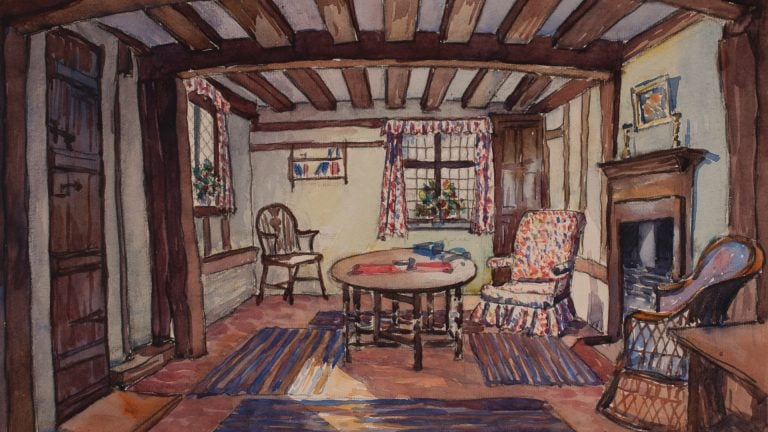
Sybil Andrews was a Canadian/British artist who was primarily known for her dynamic, modernist colour linocut prints. Trained in England, she began working in linocuts in the mid-1920s and exhibited regularly until 1939. She came to Canada in 1947, settling in Campbell River, British Columbia.
In 1921 Sybil Andrews moved to a house she named “Tyrells” in honour of her ancestor, the regicide Sir Walter Tyrell. The house, owned by her mother, was a fifteenth-century cottage on Mill Lane in the village of Woolpit.
Tyrells was undoubtedly one of the great passions of Andrews’ life and her marked preferences for the Medieval period were manifest in this home, in contrast to the modernity of the linocuts she produced during her tenure here. Her love for this half-timbered home is recorded in the images she created of the inside and outside of the house.
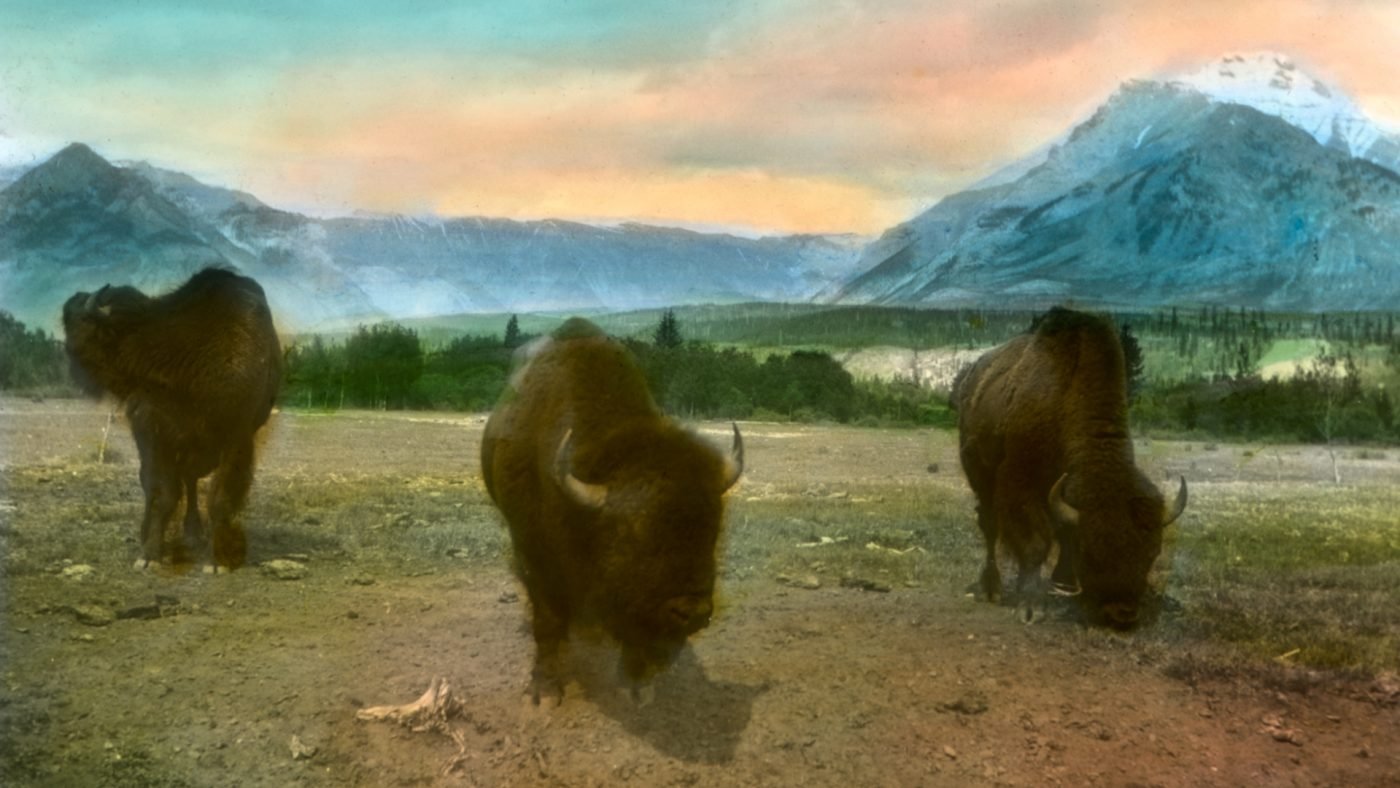
Hand tinted (colour) lantern slide collected and used by Tex Vernon-Wood, hunting guide and outfitter in the Canadian Rockies.
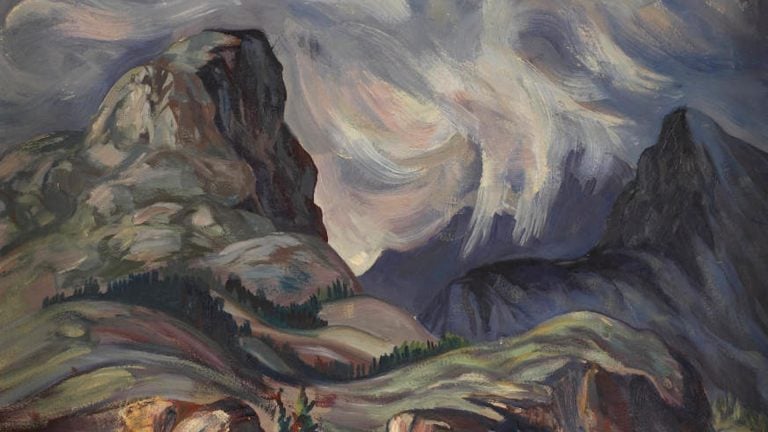
This painting is representative of Marion Nicoll’s early work as a landscape artist in Alberta. It demonstrates Nicoll’s interest in forms, and colour; an interest which she would pursue in her later work as an abstract artist.
Marion Nicoll (née MacKay) was born in Calgary in 1909. She studied in Toronto at the Ontario College of Art beginning in 1926. She went home for a visit in 1929, but her mother refused to let her return to the east because Marion had lost weight and developed anemia while in Ontario. She instead attended the Tech (the Provincial Institute of Technology and Art, now named the Alberta College of Art and Design) in Calgary. She studied under A.C. Leighton, and in 1933 became a teacher there. In 1940 she married Jim Nicoll, whom she had met at a Calgary Sketch Club event in 1931.
While working as an instructor in 1946, she was introduced to the concept of automatic drawing – drawing without conscious intent – by J.W.G. “Jock” MacDonald. She was fascinated with the technique and continued to do these drawings for the next 11 years. In 1957, while at a workshop at Emma Lake, Saskatchewan, Marion was introduced to influential artist Will Barnet, and with his encouragement she embraced abstraction in both her paintings and prints. From 1958-59, she studied with Barnet at the Art Students League in New York. It was a time of great productivity for Marion. She returned to Calgary in 1959, teaching again at the Alberta College of Art (ACA). By 1966, the arthritis that had first emerged in the 1950s had become so bad that she was no longer able to teach. Although she remained active in the community, she was able to create relatively little work. She died in 1985.
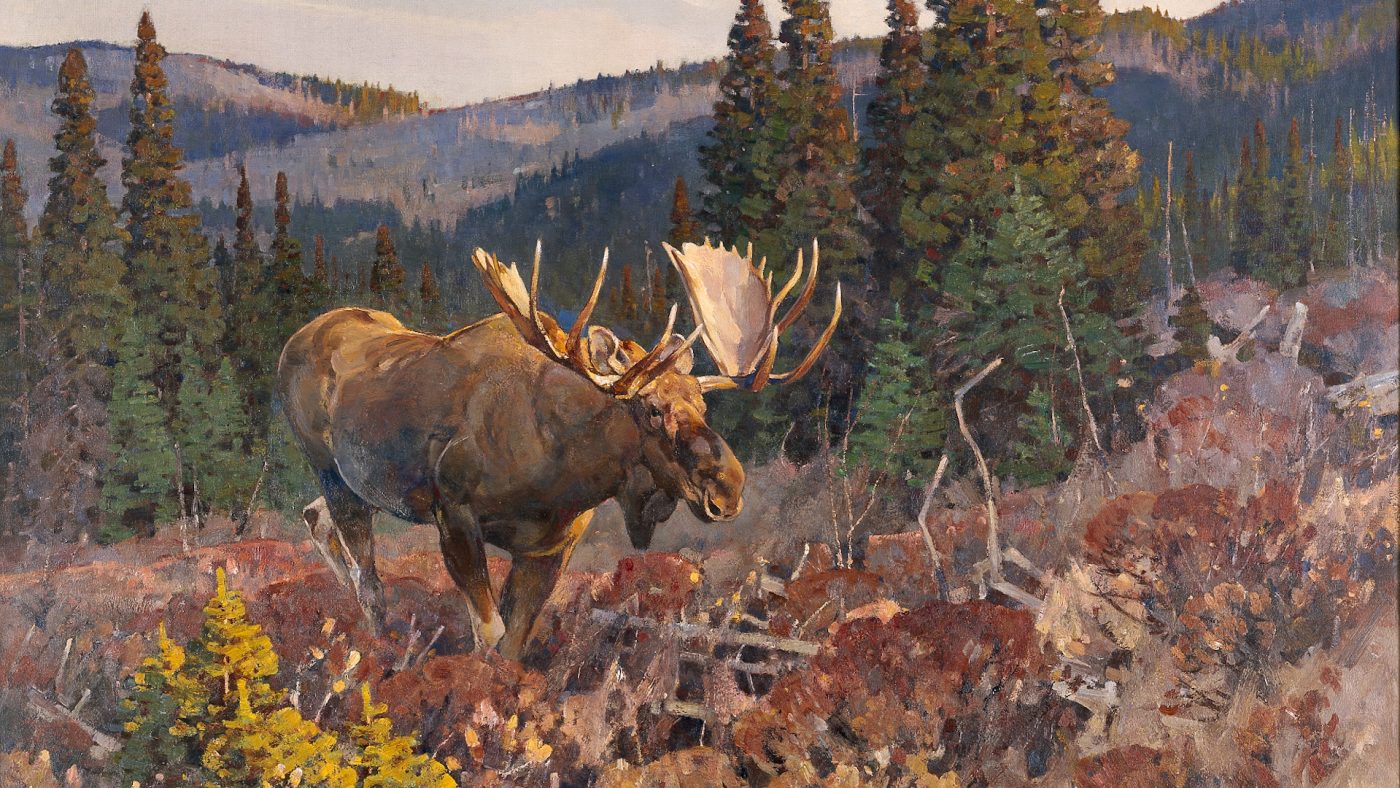
Carl Rungius was the first career wildlife artist in North America and during his active painting years (first half of the twentieth century) he established a reputation as the most important painter of big game. In order to capture the exact likeness of the animals he was portraying, he would spend more time than any other artist directly observing the animals.
He famously said “You have to keep painting outdoors; if you paint outdoor scenes in your studio your color invariably gets too warm, too hot. Only if you paint outdoors do you see the cool silvery tones that are the true colors of nature.” -Carl Rungius
This moose is painted like many of his subjects, in their natural environment – a practice that was new to painting in early twentieth century North America. His romanticised paintings represent an Eden-like world where the human imprint on the landscape is invisible.
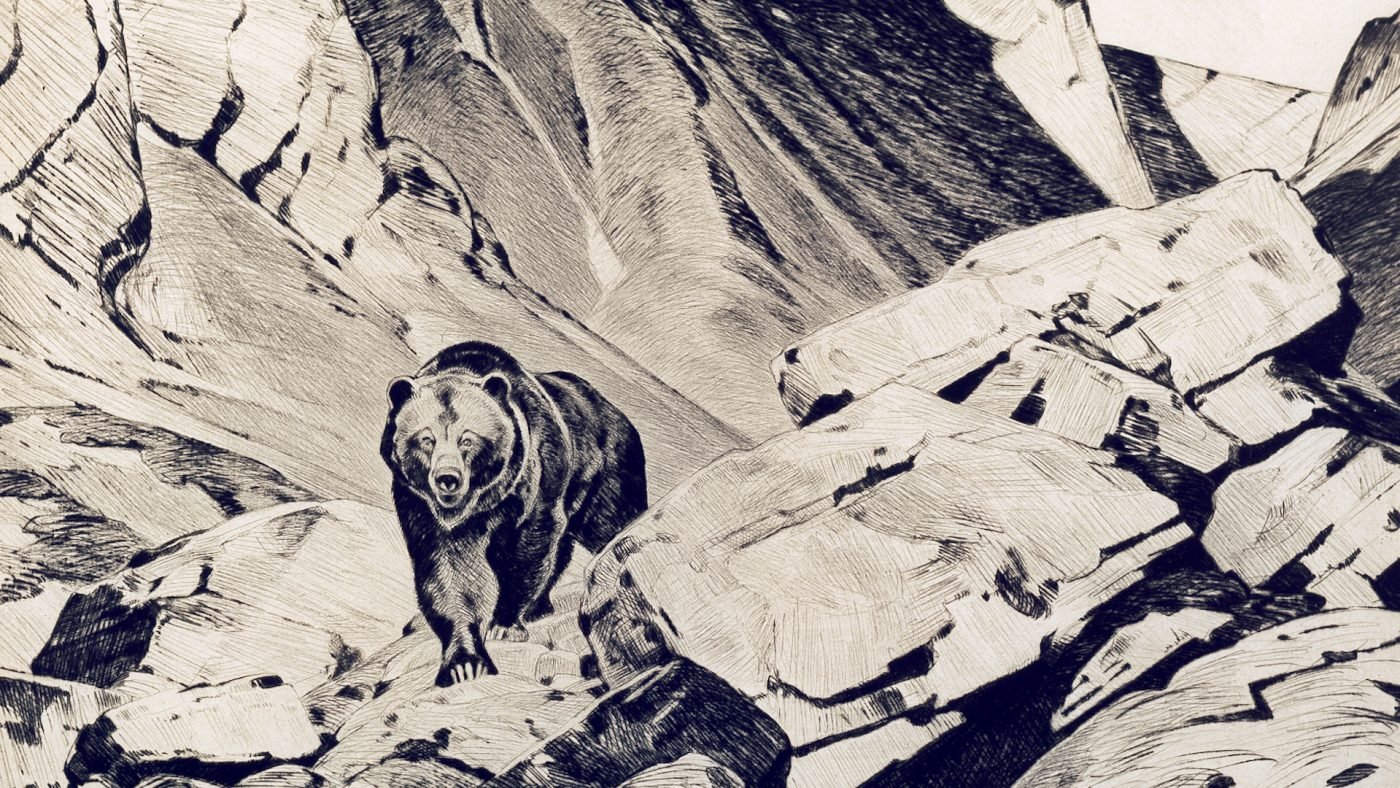
In 1924, Rungius’s dealer convinced him to try drypoint etching. Rungius wrote to Jimmy Simpson: “The start was hard but I am enjoying the work with the needle now thoroughly and am getting more fun out of it all the time, and more, I received my first etching check from Harlow Friday.” Over the next 20 years, Rungius produced 46 drypoint etchings.
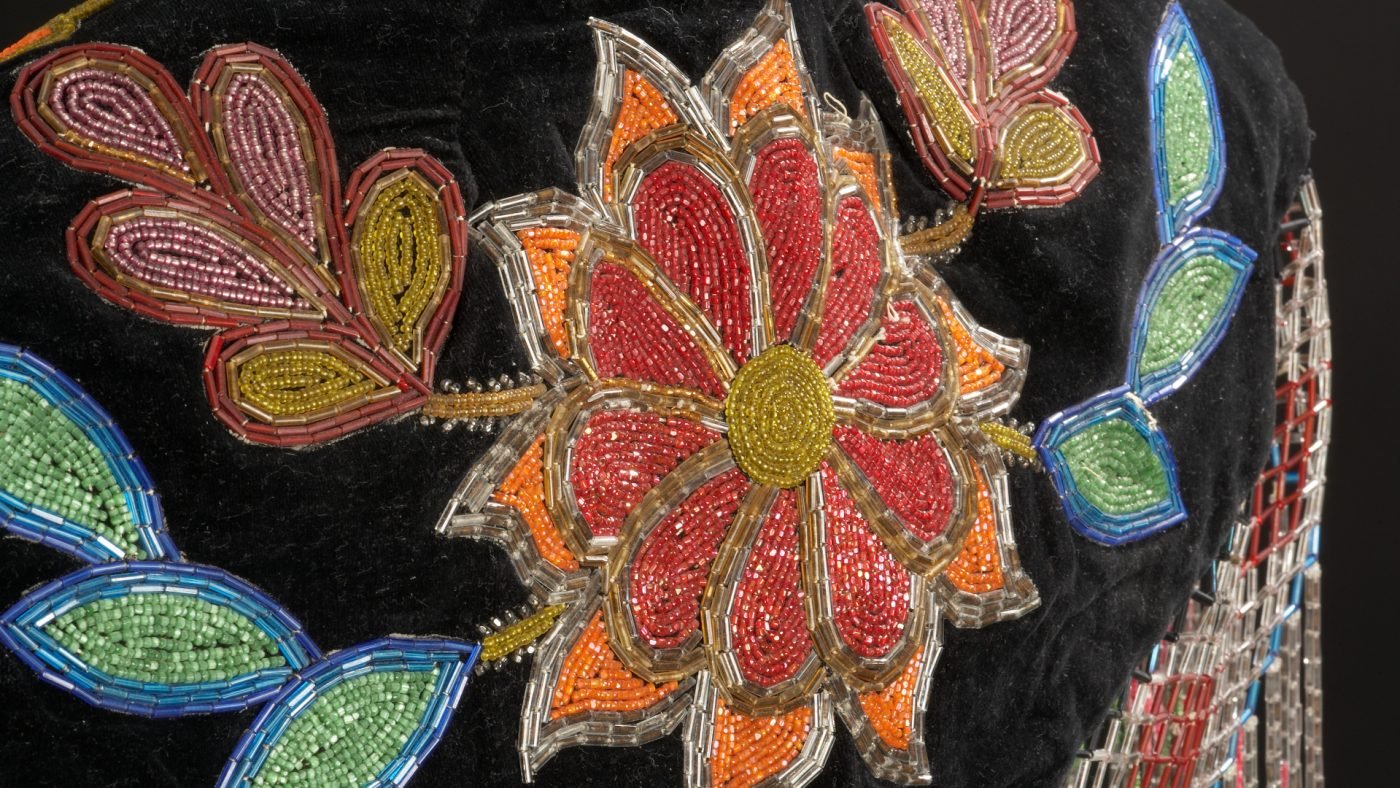
This beautiful cape has a velvet base with exquisite coloured beadwork. It was likely worn by a woman or teenager. The beadwork includes flowers and leaves but also has blue stars on the back that represent morning and evening stars and may have had a special relationship to the owner’s name.
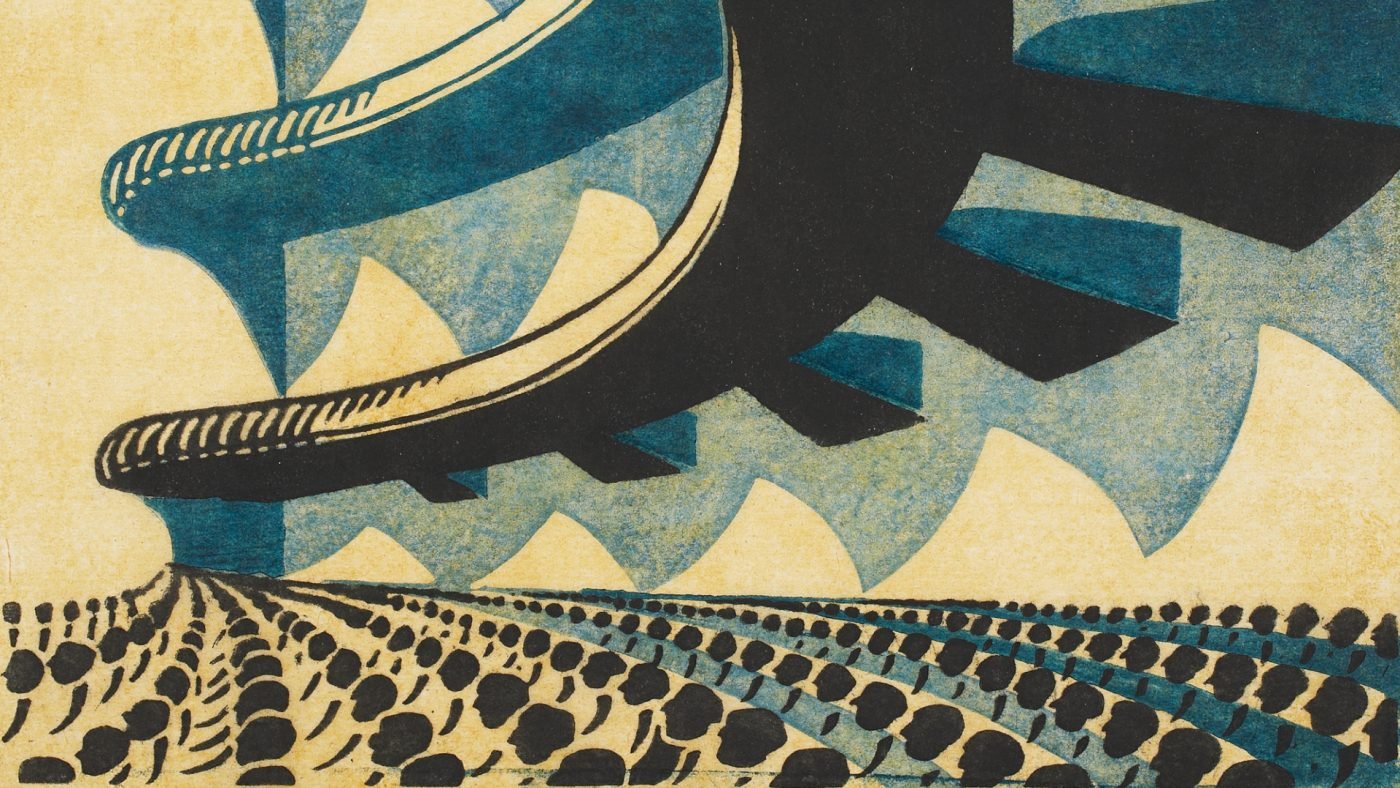
Despite being one of Sybil Andrews’ earliest linocuts, there is palpable modernity in Concert Hall due to its patterned rows and abstracted detail.
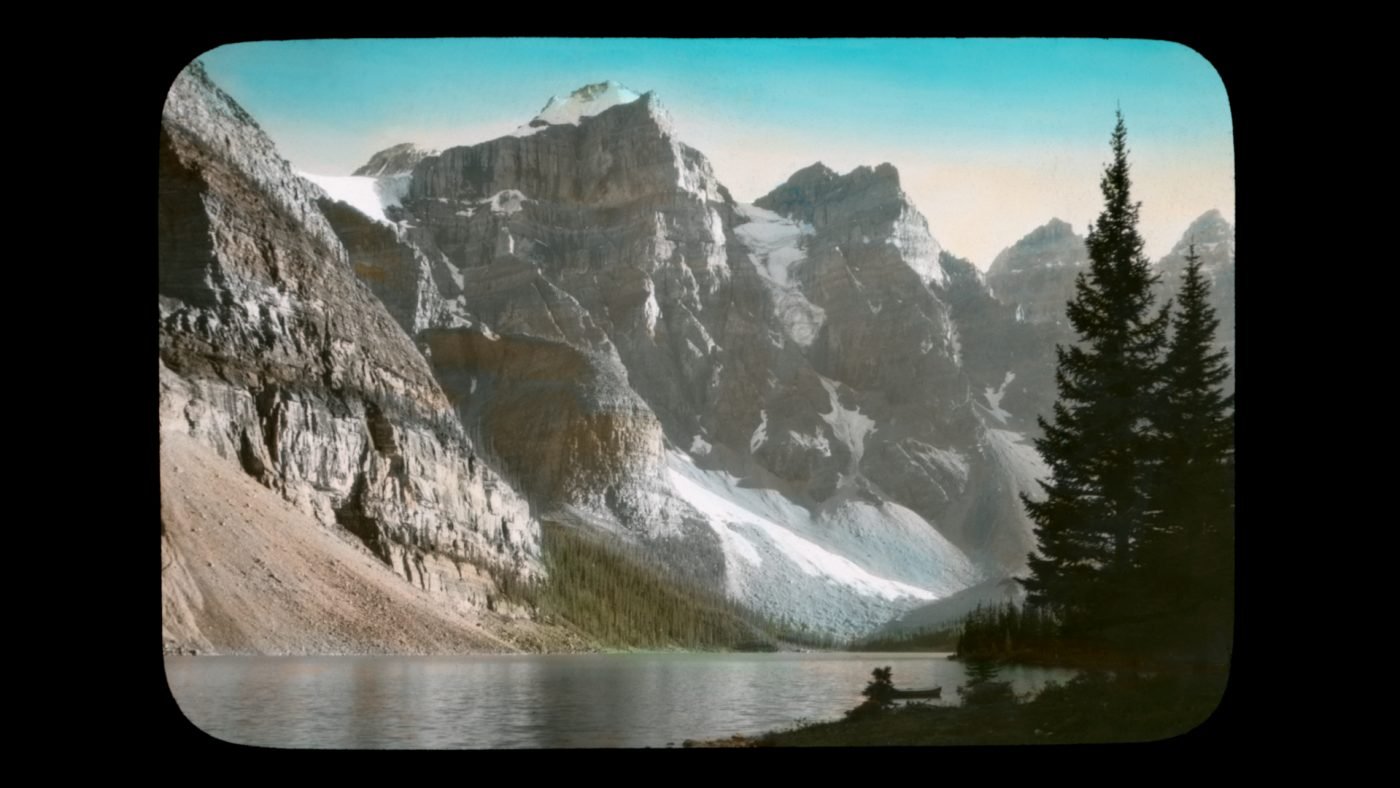
This image is of Moraine Lake in Banff National Park, Alberta. These hand-coloured photographs were printed on glass and projected through a Lantern Slide Projector. The slides were used in the 1920s by Long Lance in illustrated lectures about western Canada and include early history views of Calgary, Banff and Lake Louise and other Alberta landscapes.
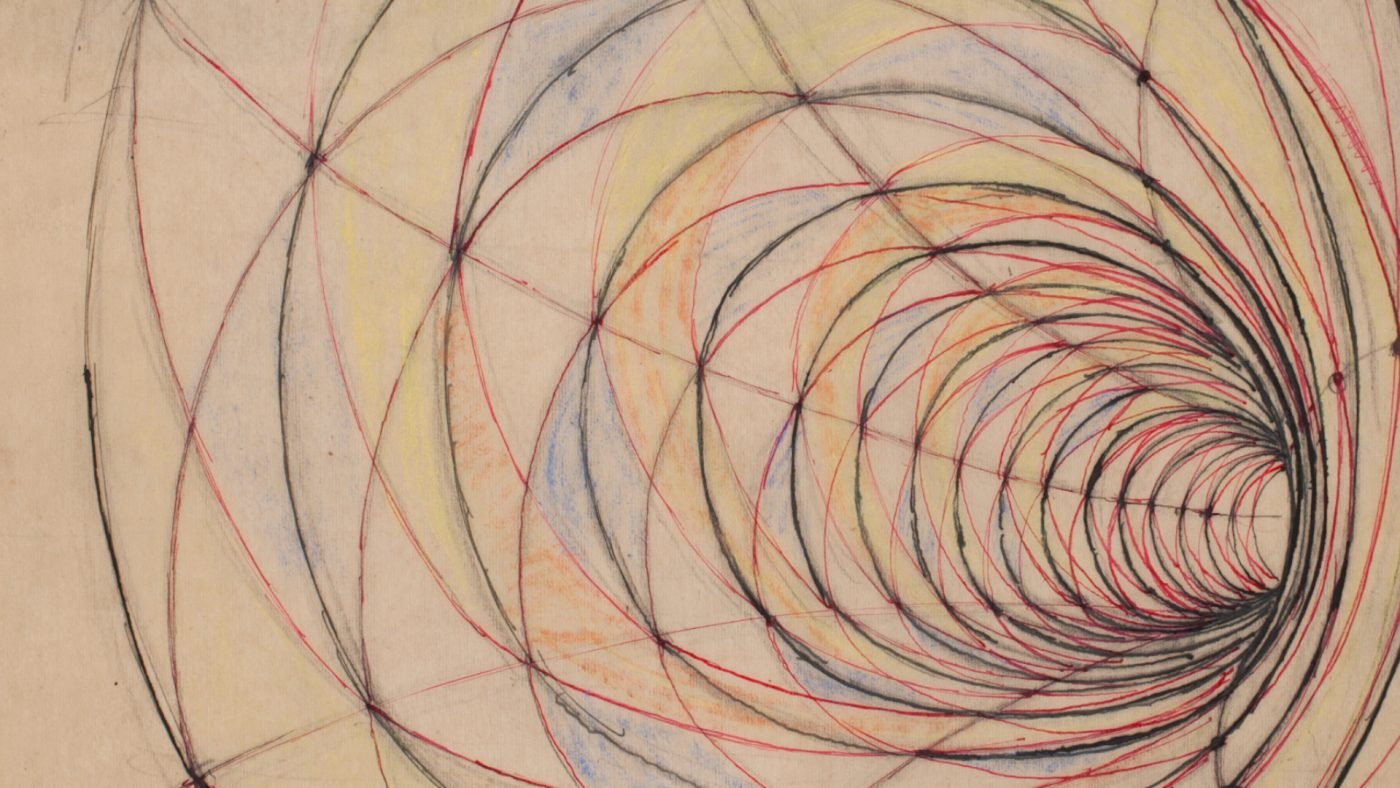
In Glenbow’s collection are all of Sybil Andrews’ famous colour linocuts and the original linoleum blocks, paintings in oil and watercolour, drawings, drypoint etchings, sketchbooks, and personal papers. Glenbow is the major study centre for her life and work.
This drawing study has an inscription by the artist “This intersection” in the bottom corner.
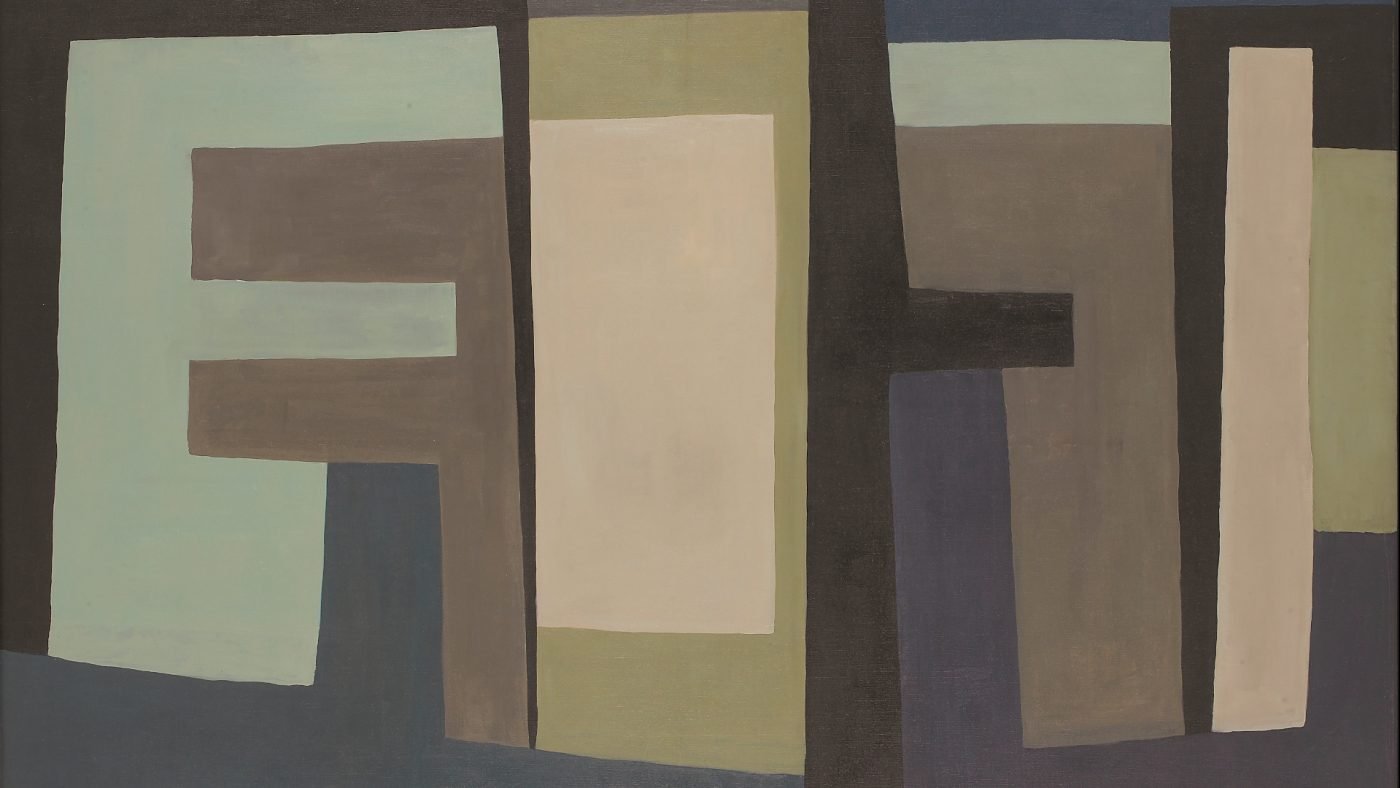
Marion Nicoll was one of the first significant abstract artists from Alberta. This evocation of her Calgary neighbourhood exemplifies what she once described as “trying to put down what there is here, this particular feeling of space …”
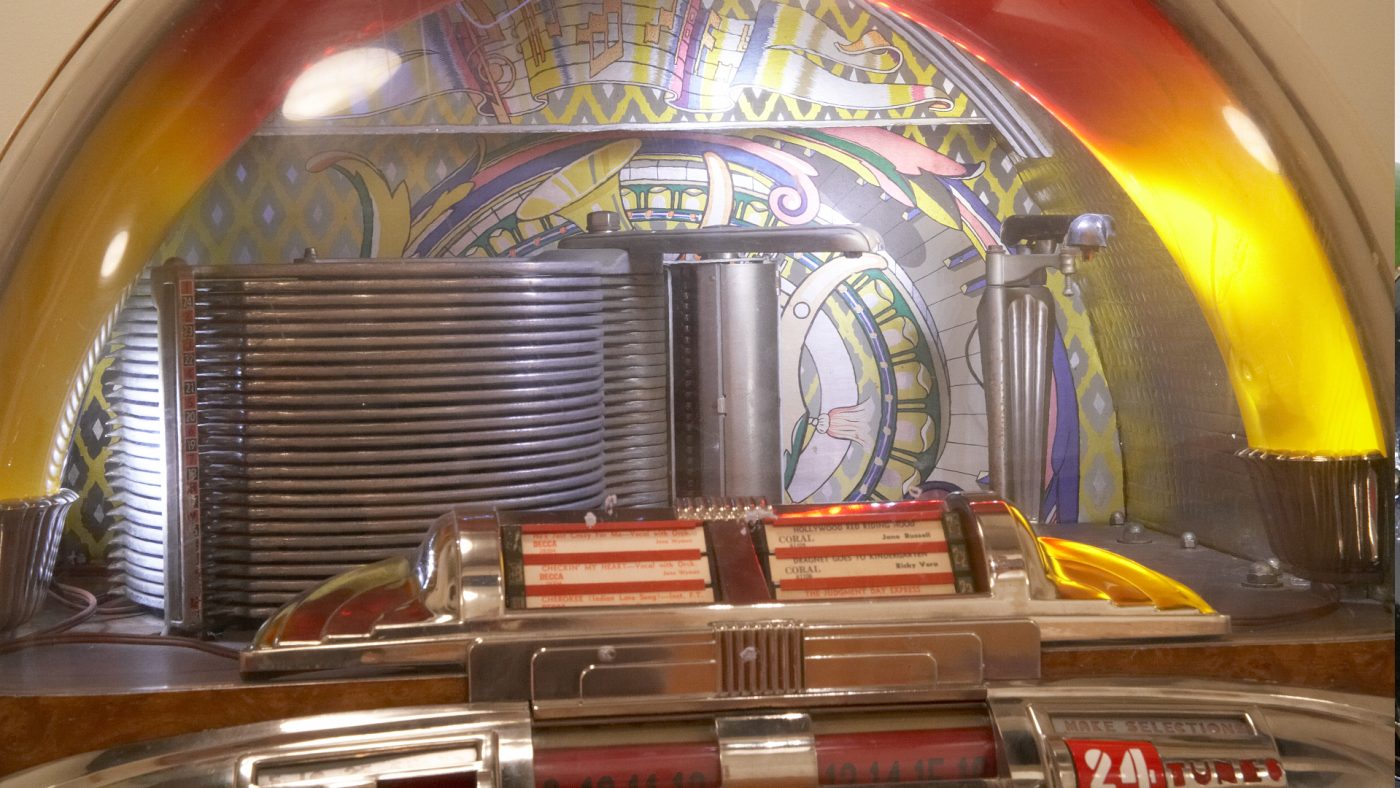
This original jukebox stood in the Union Cafe in Ponoka, Alberta, throughout the 1940s. Hong Mah Poy (son of owner James Mah Poy) was the Cafe manager, and his favourite jukebox selection in 1948 was “Shine On Harvest Moon.”
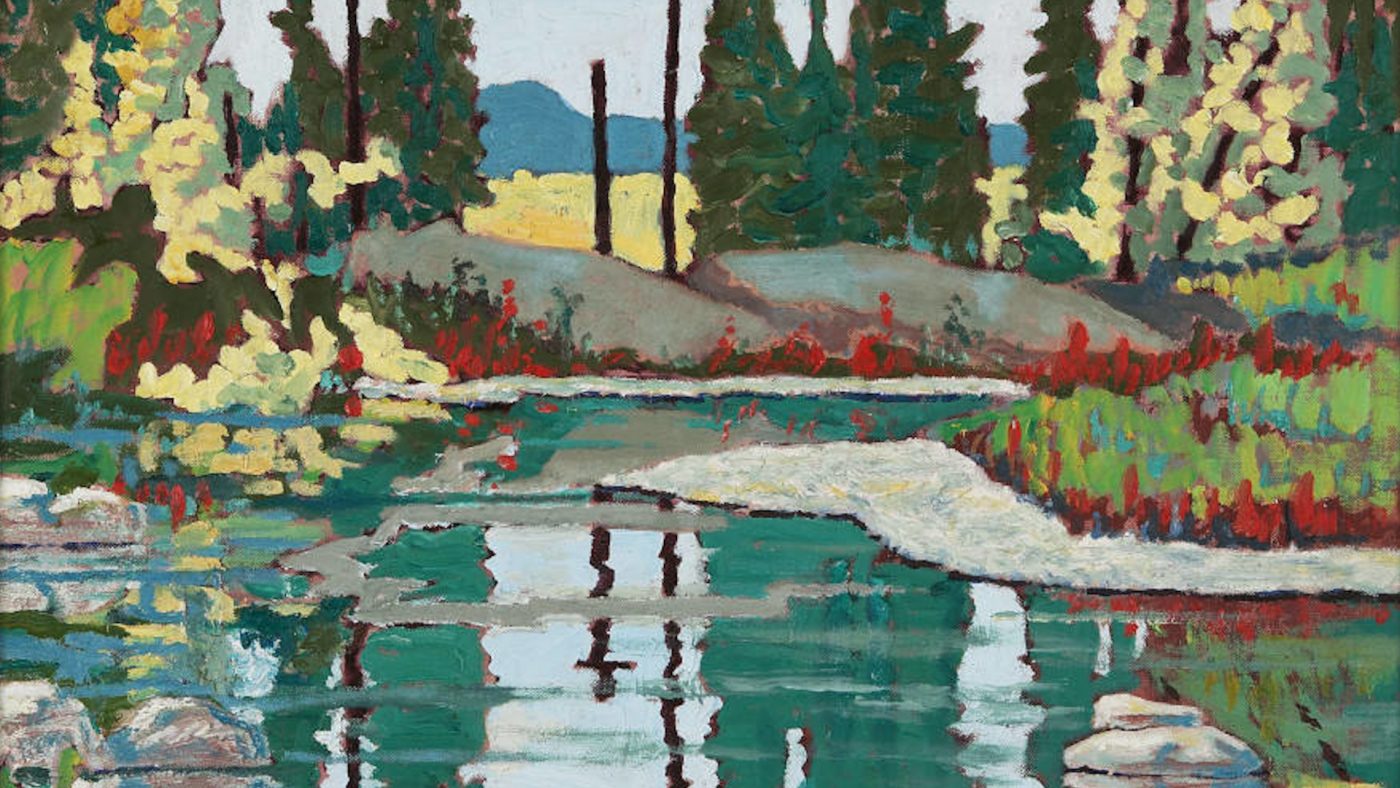
James McLaren Nicoll was born in 1892 in Alberta, but grew up in British Columbia. He served in the First World War prior to studying as a civil engineer at the University of Alberta. He began to paint in 1930. During the Second World War he was an engineer for the Royal Canadian Air Force, and moved frequently across the West as he supervised the construction of air force bases. He travelled with his wife, Marion Nicoll, to New York in 1958, studying with her at the Arts Students League. Active in the artistic community, he was an editor of Highlights, the bulletin of the Alberta Society of Artists (ASA), and was the President of the ASA in 1943. He worked to improve the arts in Calgary, becoming the chairman of the visual arts committee for the Calgary Allied Arts Council. Also a writer and poet, in 1980 he published The Poetry and Prose of Jim Nicoll. He died in 1986.
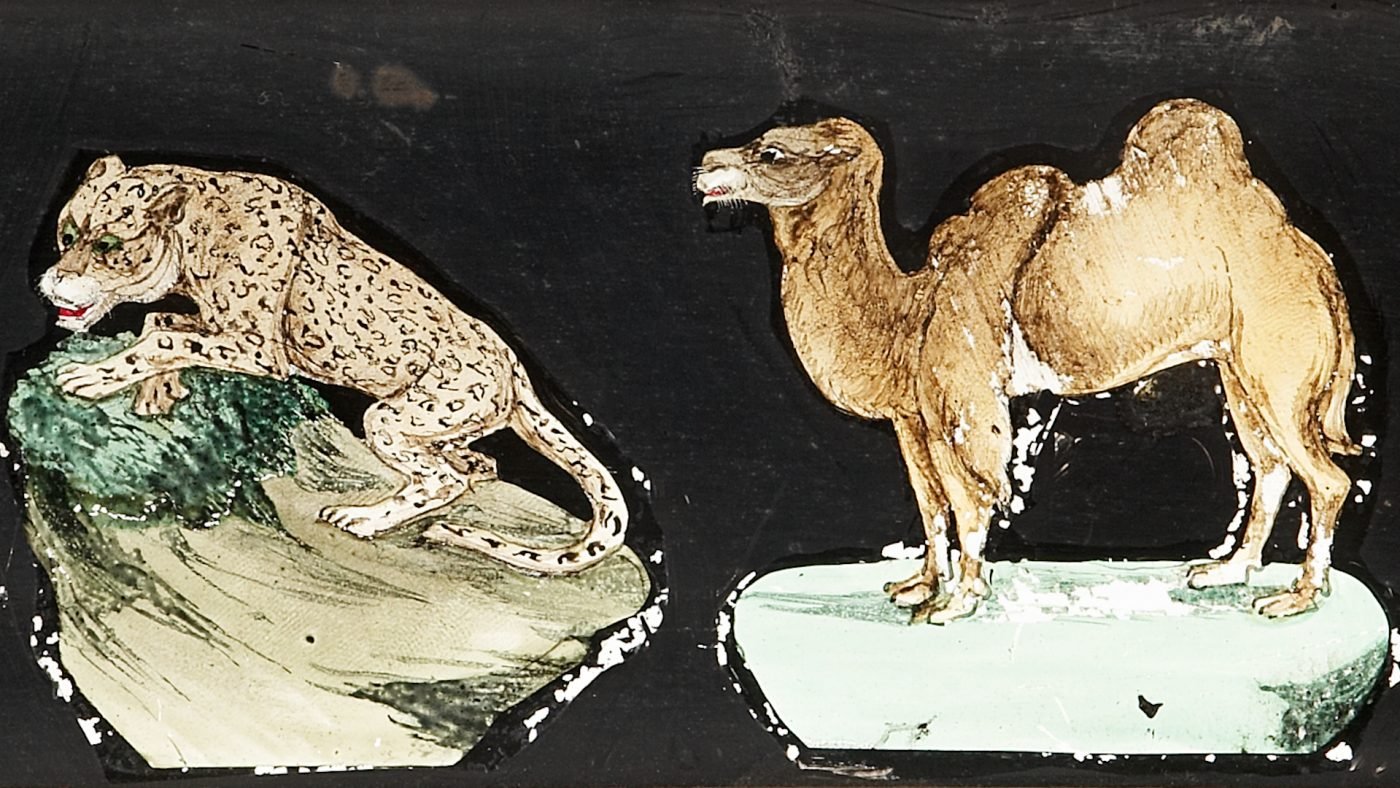
Glenbow has 207 lantern slides like this one in the collection. These hand-coloured transparencies were mounted in frames that slid into a “Magic Lantern Slide Projector” to be projected.
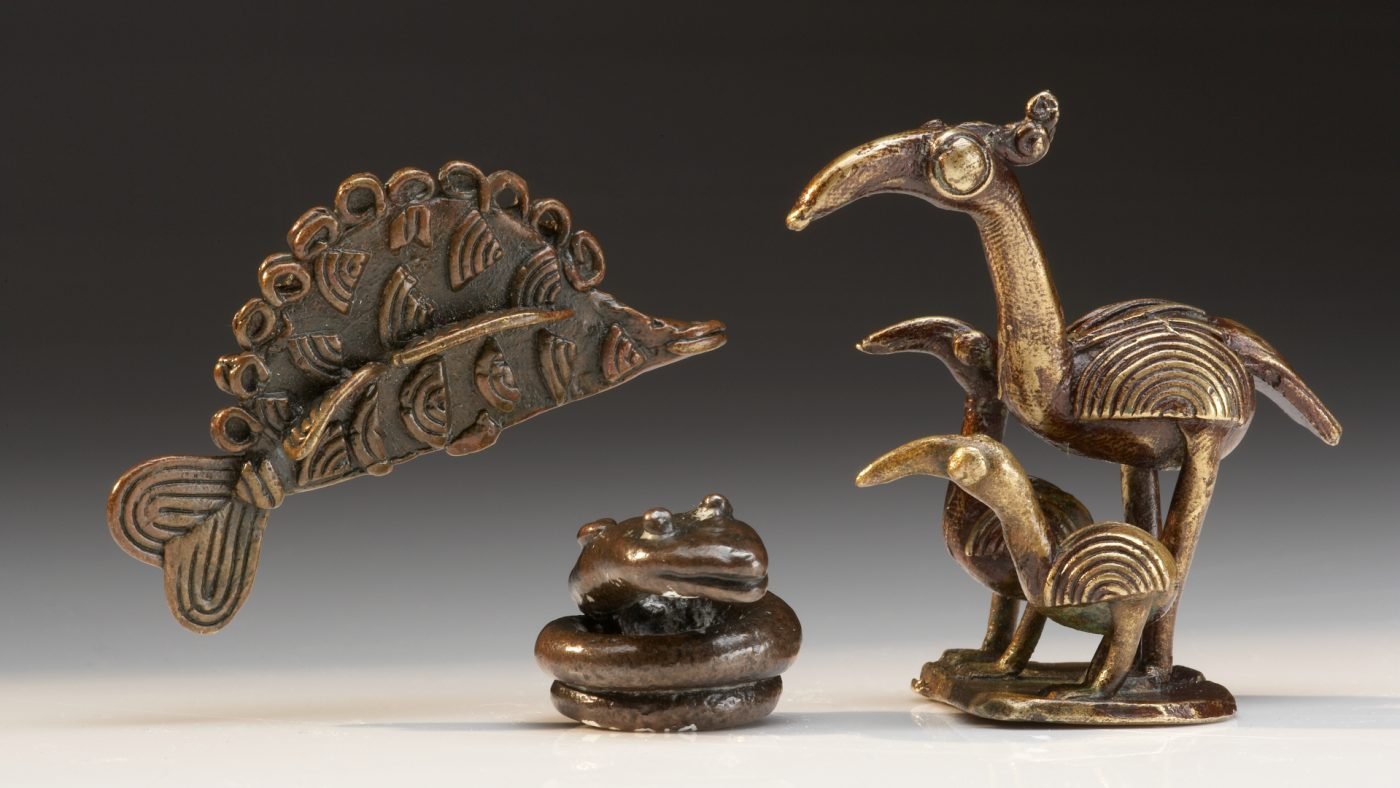
These small cast-bronze weights are likely Akan goldweights from various areas in West Africa [Fish (Western Sudan), Coiled Snake (Ghana) and Birds (Guinea Coast)], where they were used to weigh gold and merchandise. Goldweights usually look like miniature models of everyday objects or animals.
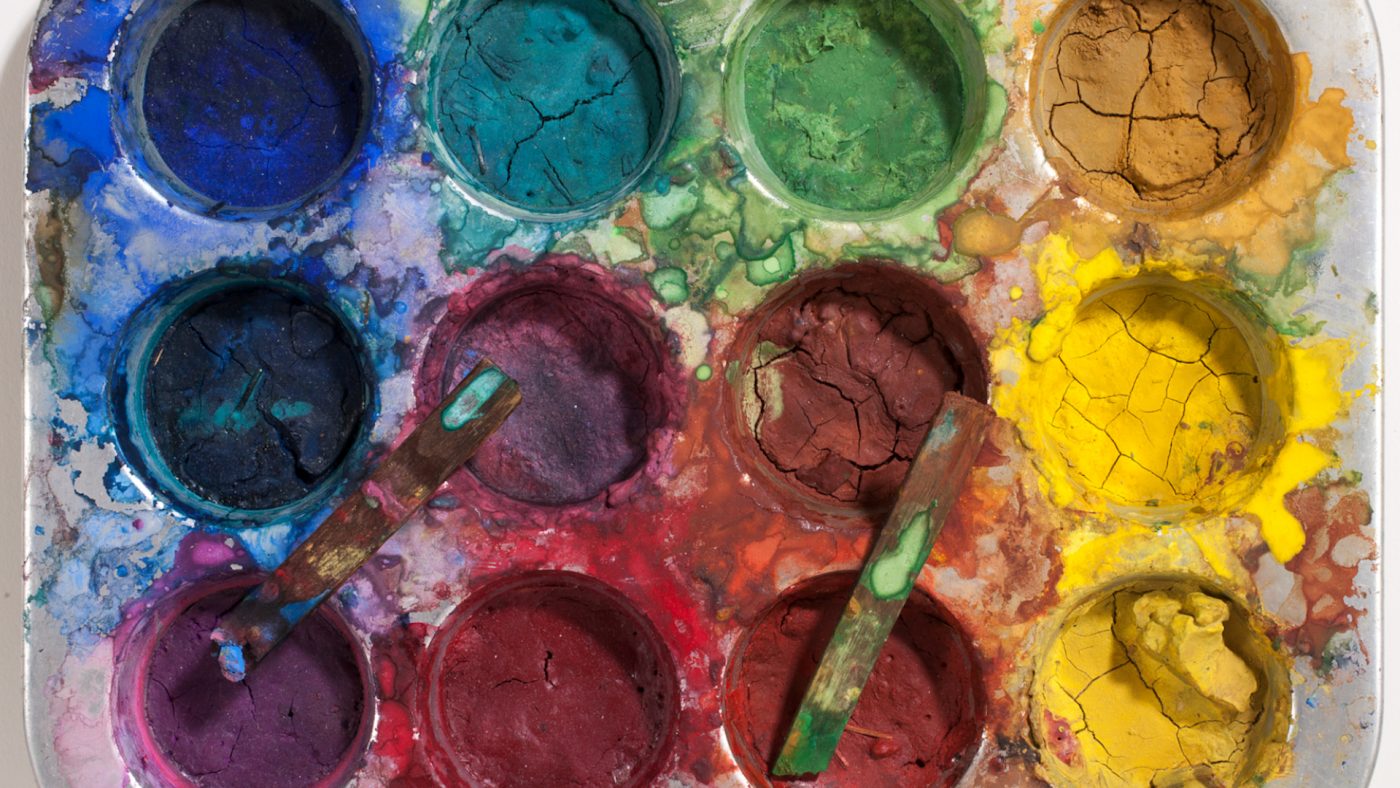
This paint palette belonged to Canadian/British printmaker Sybil Andrews.
